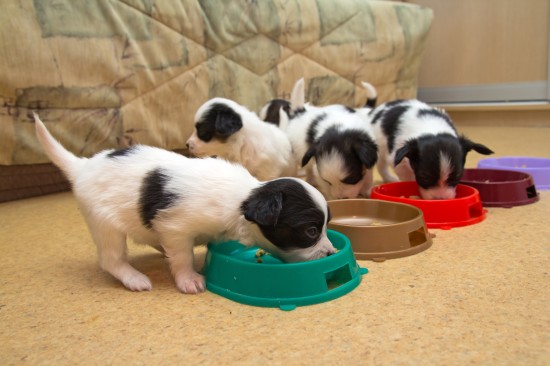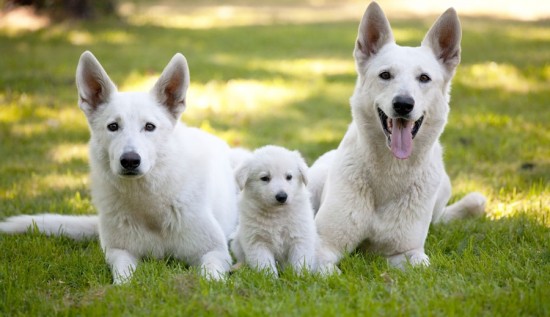
The basic dog obedience training collar goes by many names, including choker, choke chain, training collar, correction collar and slip collar. These training devices are among the most popular and most commonly used tools with both amateur and professional dog trainers.
While a training collar is a widely used tool, as with any tool it must be used properly in order to be effective and safe for your dog. Among the most important considerations when using this equipment are:
- How well the devise fits your dog. It's essential that it properly fits your dog. If it doesn't fit correctly you risk losing control in dangerous situations.
- Putting the equipment on the right way. There's a right way and a wrong way to fit a collar, and putting it on incorrectly will make it both ineffective and potentially dangerous.
- Using the devise properly. It should be used as a sharp reminder to your dog, not as punishment. Avoid applying constant pressure on the choke chain.
- The weight of the chain and the size of the links. The weight of the chain should always be appropriate to the size and weight of your dog.
- The placement on your dog.
Sizing And Measuring
Determining if the dog obedience training collar is the right size is relatively easy. Ideally, it should fit snugly, yet comfortably over your dog's head. Like my father used to say about tightening a bolt, it shouldn't be too tight, but it shouldn't be too loose either. Too tight and it'll be difficult to get on and off. On the other hand, too loose and it can potentially slip off when your dog lowers his head.
Measure your dog's neck with a tape measure, then add 2 to 3 inches. For example, if your dog has a neck 12" in diameter, you would want to buy a collar that's 14" in length. Chain slip collars are generally sized in two inch increments.
Proper Fitting
When fitting a correction collar, the part of the chain which is connected to the leash should be on the top of the dog's neck. With this arrangement, it releases the instant the leash is loosened. Training collars are only effective when they tighten or loosen easily and quickly. Tightening is the first step of any correction, loosening is the second step.
If the part of the correction collar that's attached to the leash is not on the top of the dog's neck, it can still become taunt, but it generally won't become loose again. This constant pressure on your dog's neck initiates a counter response on the part of the animal, and your dog will quickly learn to pull and strain against the leash.
Also, if the accompanying lead is too long it can require a great deal of skill on your part to use correctly. So make sure you use a length that gives you comfortable control.
Finally, it's important to purchase a dog obedience training collar that's well made and strong. The extra expense will easily pay for itself by keeping both you and your dog safer.
 Dogs And Dinnertime - Dogs And Their Attitude To Food
Dogs And Dinnertime - Dogs And Their Attitude To Food
 Hereditary Health And Genetic Diversity Within The Chihuahua Dog Breed
Hereditary Health And Genetic Diversity Within The Chihuahua Dog Breed
 Top Tips For Gerbil Health
Top Tips For Gerbil Health
 Common Dog Health Problems & How To Deal With Them
Common Dog Health Problems & How To Deal With Them
 Your New Puppy - Development From Twelve Weeks Old To Adulthood
Your New Puppy - Development From Twelve Weeks Old To Adulthood
 Bad Rabbit Behaviour - Some Common Rabbit Problems Addressed
Bad Rabbit Behaviour - Some Common Rabbit Problems Addressed
 Independent Hill Vet Covers All of Your Pet's Needs, Not Just Shots
Independent Hill Vet Covers All of Your Pet's Needs,
Independent Hill Vet Covers All of Your Pet's Needs, Not Just Shots
Independent Hill Vet Covers All of Your Pet's Needs,
 How The American Cocker Spaniel Became Recognised As A Breed In Its Own Right
How The American
How The American Cocker Spaniel Became Recognised As A Breed In Its Own Right
How The American
 Keeping Your Dog Safe On Christmas Day
Keeping Your Dog
Keeping Your Dog Safe On Christmas Day
Keeping Your Dog
 Underground Fence Training for Your Dog
Underground Fence Training for Your Dog
If a t
Underground Fence Training for Your Dog
Underground Fence Training for Your Dog
If a t
 Things You Need To Know Before Building a Custom Made Chicken Coop
Things You Need To Know Before Building a Custom Made Chic
Things You Need To Know Before Building a Custom Made Chicken Coop
Things You Need To Know Before Building a Custom Made Chic
Copyright © 2005-2016 Pet Information All Rights Reserved
Contact us: www162date@outlook.com